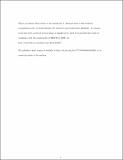Files in this item
Interpretation of lake sediment accumulation rates
Item metadata
| dc.contributor.author | Bennett, Keith David | |
| dc.contributor.author | Buck, Caitlin E. | |
| dc.date.accessioned | 2016-03-30T08:30:05Z | |
| dc.date.available | 2016-03-30T08:30:05Z | |
| dc.date.issued | 2016-07 | |
| dc.identifier | 241590146 | |
| dc.identifier | ebca6dc5-41a5-44d1-8662-35536c42f3f2 | |
| dc.identifier | 84977160996 | |
| dc.identifier | 000378639500007 | |
| dc.identifier.citation | Bennett , K D & Buck , C E 2016 , ' Interpretation of lake sediment accumulation rates ' , The Holocene , vol. 26 , no. 7 , pp. 1092-1102 . https://doi.org/10.1177/0959683616632880 | en |
| dc.identifier.issn | 0959-6836 | |
| dc.identifier.other | ORCID: /0000-0002-3423-1531/work/39732398 | |
| dc.identifier.uri | https://hdl.handle.net/10023/8511 | |
| dc.description.abstract | The pattern of ancient sediment accumulation in lake basins is usually determined for the sole purpose of obtaining a chronology of the sequence. We develop graphical representations of lake basins and how they fill with sediment in order to make generalisations about sediment patterns which can be used to distinguish those that relate to an aspect of changing environment from those that relate solely to the shape of the basin itself. Our goal is general observations that could lead to more robust interpretation of age–depth models from lake basin sediments. We show that in nearly all circumstances with constant sedimentation, the overall pattern seen at a central core should be one of decreasing rate of sediment accumulation, which tends to be constant towards the top. In most situations, the initial rate of sediment accumulation is particularly high because of the basin shape. Observed rates of sediment accumulation that increase up the core should normally indicate increasing sediment input (either autochthonous or allochthonous). On the other hand, detailed information on basin shape is needed to break decreasing rates of sediment accumulation into components because of basin shape and decreasing sediment input. These considerations show that the pattern of sediment accumulation in a lake basin has intrinsic value as an indicator of environmental change and potential utility in chronology construction, but only when interpreted in the context of basin shape. | |
| dc.format.extent | 11 | |
| dc.format.extent | 3167216 | |
| dc.language.iso | eng | |
| dc.relation.ispartof | The Holocene | en |
| dc.subject | Accumulation rate | en |
| dc.subject | Age-depth model | en |
| dc.subject | Environmental change | en |
| dc.subject | Lake sediment | en |
| dc.subject | GE Environmental Sciences | en |
| dc.subject | G Geography. Anthropology. Recreation | en |
| dc.subject | NDAS | en |
| dc.subject.lcc | GE | en |
| dc.subject.lcc | G | en |
| dc.title | Interpretation of lake sediment accumulation rates | en |
| dc.type | Journal article | en |
| dc.contributor.institution | University of St Andrews. Geography & Sustainable Development | en |
| dc.identifier.doi | https://doi.org/10.1177/0959683616632880 | |
| dc.description.status | Peer reviewed | en |
This item appears in the following Collection(s)
Items in the St Andrews Research Repository are protected by copyright, with all rights reserved, unless otherwise indicated.

